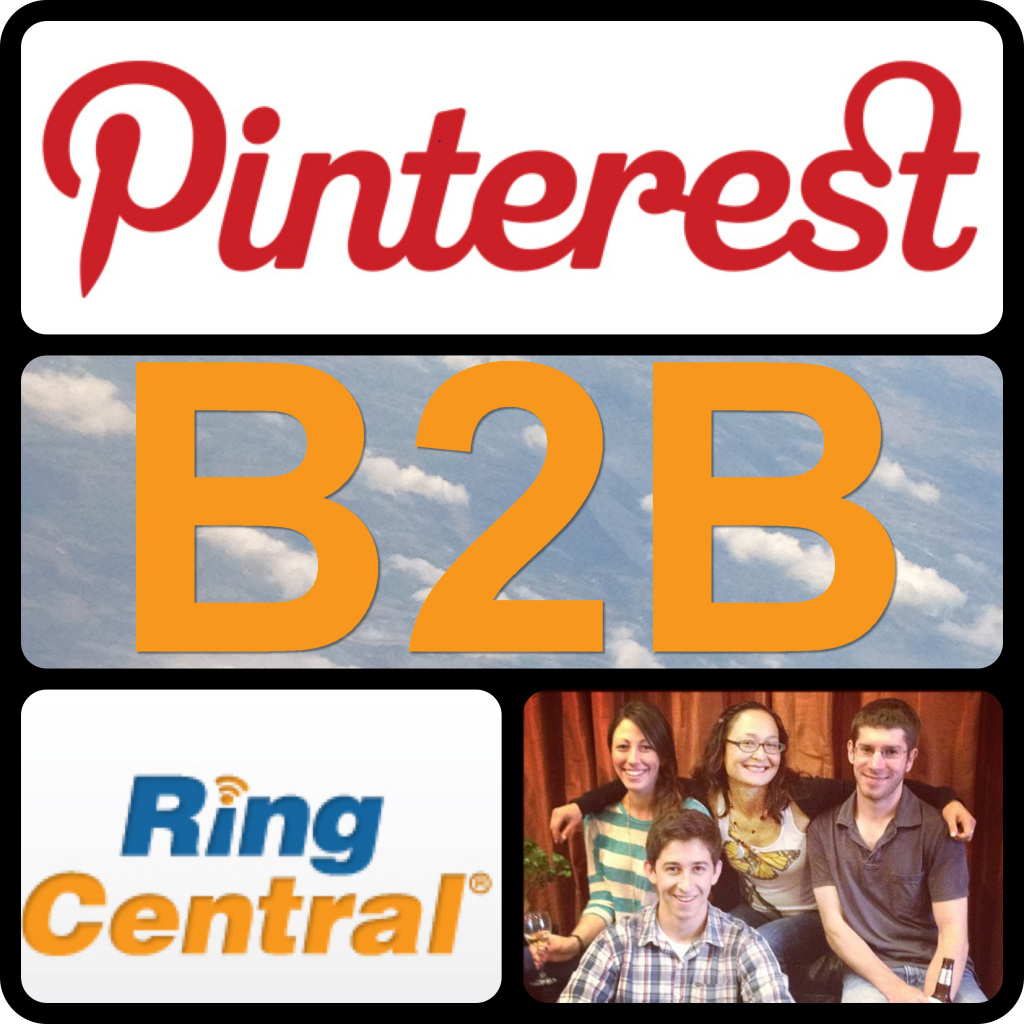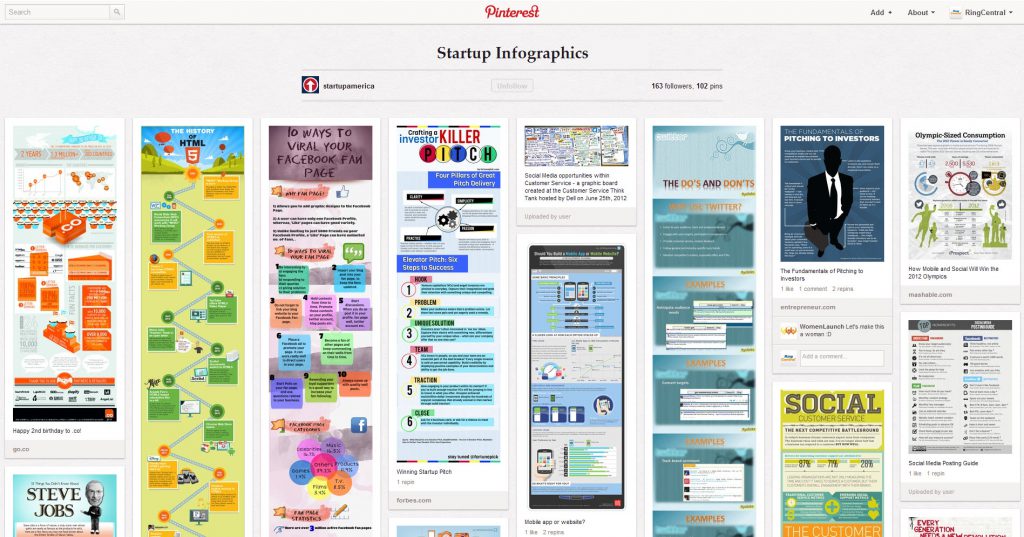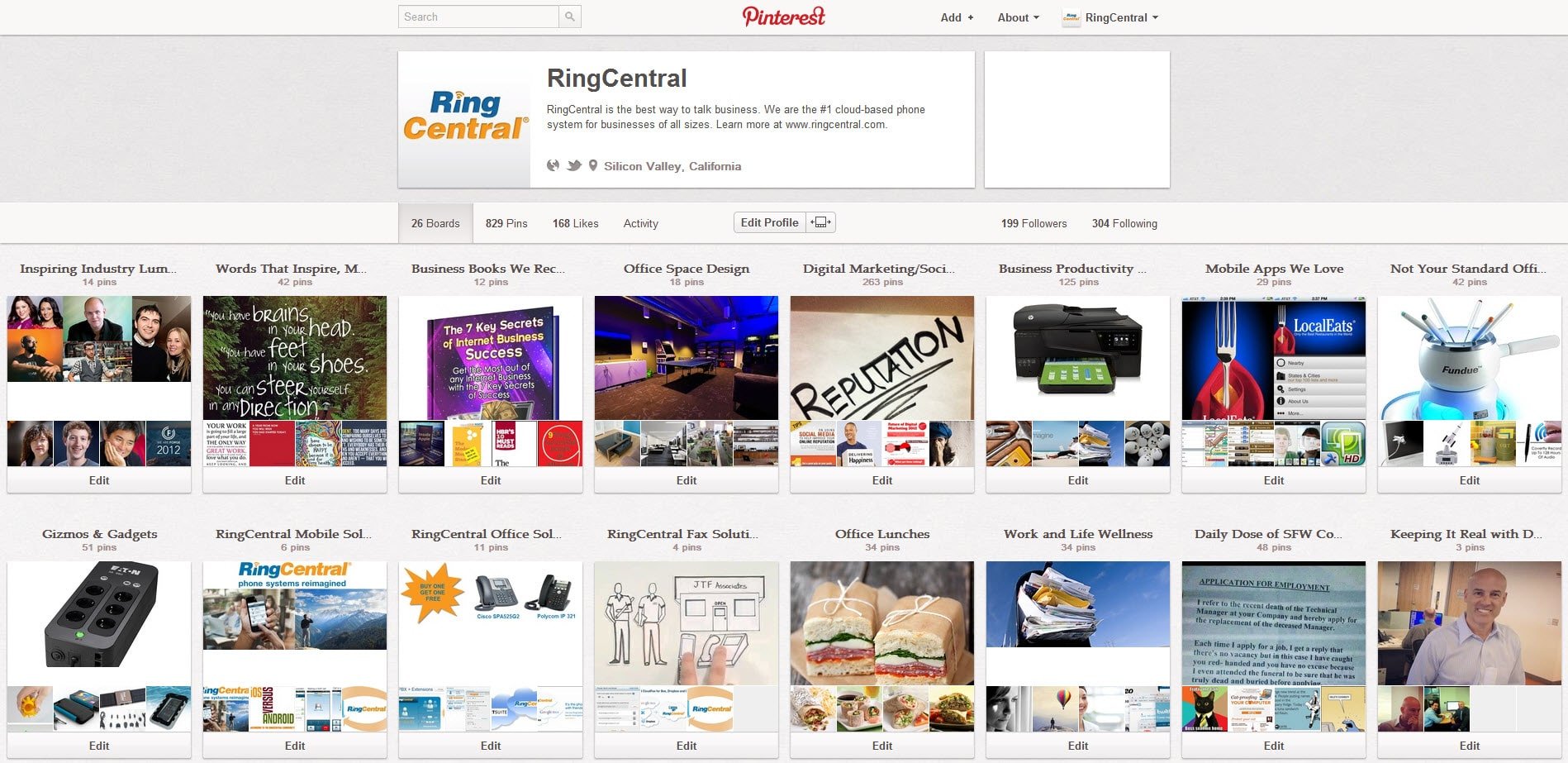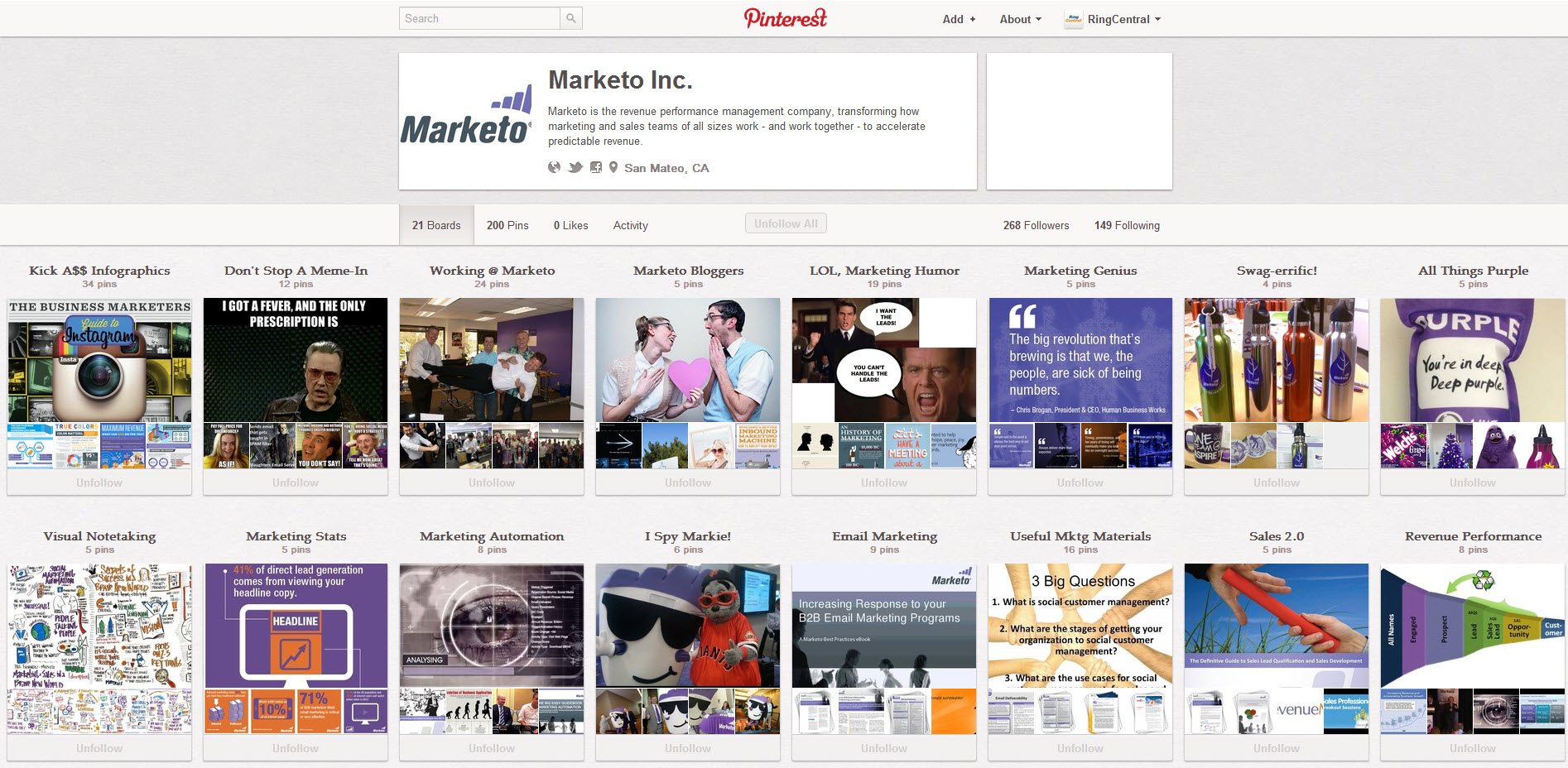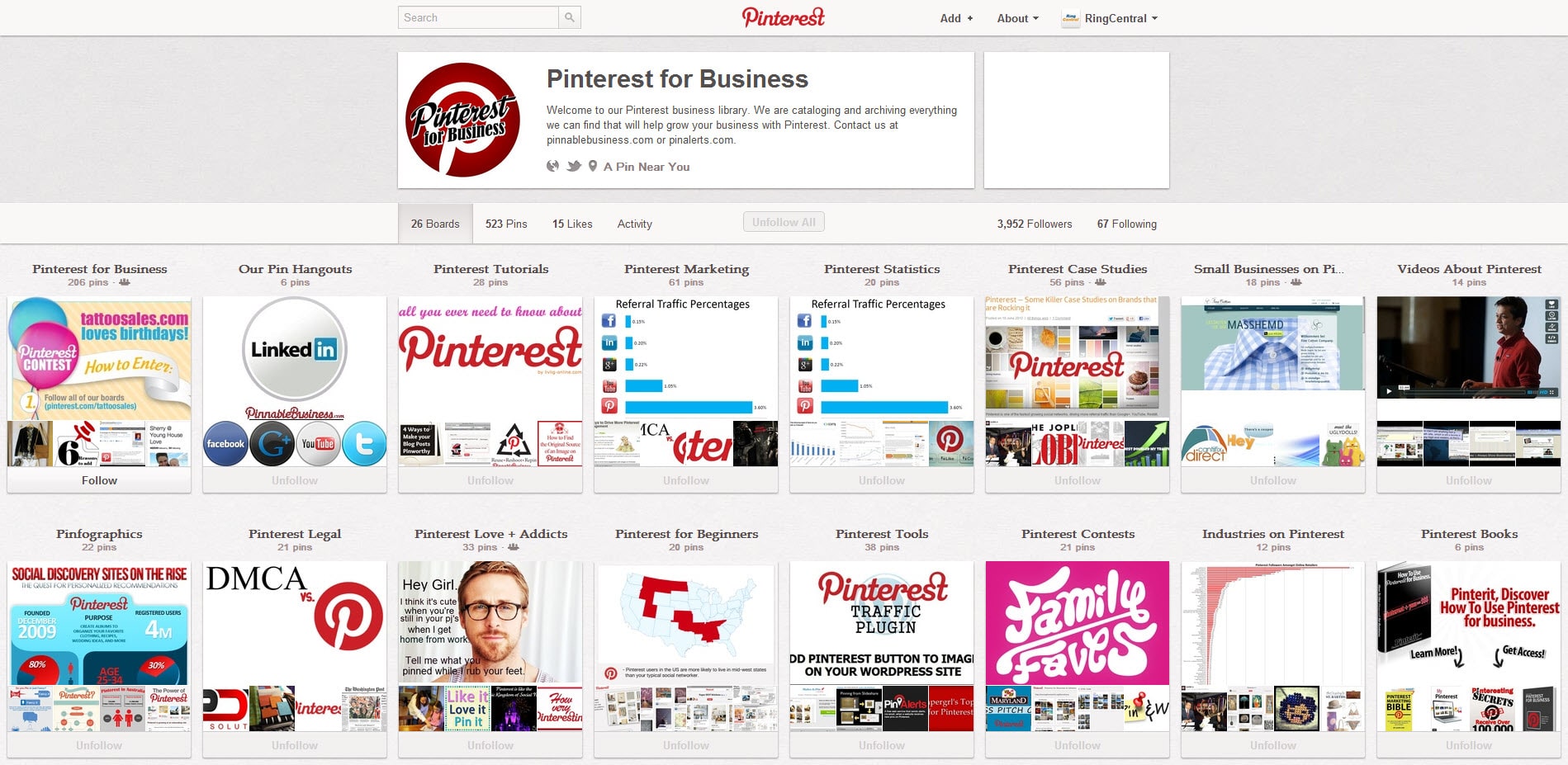With Pinterest’s ever growing popularity – it’s now ranked as the 3rd most popular and visited social network in the US — it’s easy to see why so many companies are including it among their social media engagement channels. Pinterest initially attracted a B2C audience; however, today, plenty of B2B content can be found there as well.
RingCentral engages with our B2B audience by pinning content related to our service, the cloud industry, and business topics. As with any new social platform, we’ve experimented with different approaches and evaluated the resulting effects. Below are five best Pinterest practices that we find effective from a B2B marketing perspective.
1. Include strong visuals in all your content, e.g., blog articles
Pinterest is clearly an image-heavy social site. A pin isn’t a pin without a graphic. Text is an after-thought. So make sure the image you are pinning speaks a thousand words. Visually-appealing and evocative pins are more likely to be re-pinned, liked, or clicked on. Remember, if you’re pinning content from your business’ website or blog, then you want to aim for engagement actions that will take people back to your site and/or compel them to spread your content.
Marketing software company HubSpot is a great case study in strong Pinterest visuals.
2. Infographics
Infographics are all the rage and very well-suited for the Pinterest audience. In general, infographics are both visually-appealing and informative, containing statistical and industry data – perfect for the B2B audience. Consider creating your own infographic with data that’s available on the Internet (just make sure you include sources) to position your company as a thought leader on a specific topic. Entrepreneur organization Startup America has a great infographic board.
3. Identify specific themes/topics relevant to your business and stick to them
Don’t be one of those brands that posts willy nilly. Establish which topics are relevant to your business and audience (see our blog post on content strategy) and pin only content related to those topics. For example, RingCentral’s focus topics include content about our cloud telephony service, cloud industry trends, and business success tips for our B2B audience. We aim to educate and add value to entrepreneurs and business leaders with boards like Business Books We Recommend, Cloud Computing, Digital Marketing/Social Media, and Business Productivity & Success Tips.
4. Don’t be all business all the time
It’s okay to project a fun and friendly brand personality, even in the B2B world. Just stay true to your corporate culture and your business topics/themes. RingCentral has less serious boards like Daily Dose of SFW (Safe For Work) Comic Relief, Not Your Standard Office Supplies, and Behind-The-Scenes at RingCentral. Consider pinning photos of your employees and executives, happy customers, and anything in general that makes your organization a unique one.
Revenue performance management company Marketo does a great job of pinning valuable business information, as well as plenty of humorous content that includes employee shenanigans.
5. Develop B2B Relationships on Pinterest
Like with any social channel, your goal is to build engagement – you’ve got to give some re-pin love to get some re-pin love. So be sure to follow other B2B brands that you admire and/or are relevant to your business. Re-pin, like, and comment on their pins and you’ll usually find some reciprocal actions. But don’t re-pin for just the sake of re-pinning; make sure your re-pins are consistent with your brand topics. Following other B2B brands may also provide ideas for content and additional best practices. Our favorite business resource on Pinterest is Pinterest for Business.
Originally published Jul 24, 2012, updated May 23, 2021

